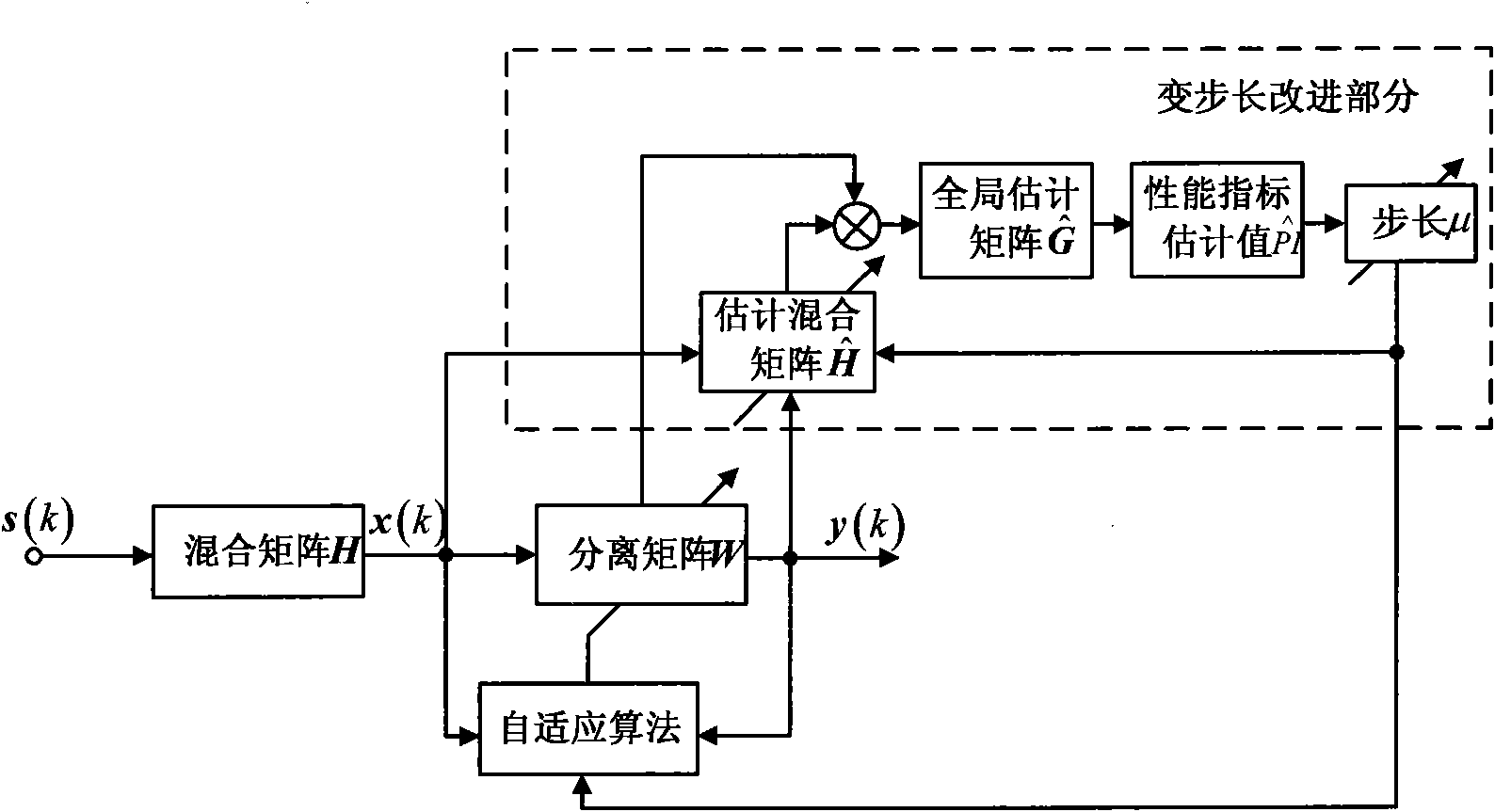Variable-step self-adaptive blind source separation method and blind source separation system
A technology of blind source separation and variable step size, which is applied in the field of signal processing, can solve the problems of failed signal separation, slow convergence speed, and unguaranteed signal separation accuracy, so as to improve separation accuracy and separation effect, reduce Steady-state error, highly achievable effect
- Summary
- Abstract
- Description
- Claims
- Application Information
AI Technical Summary
Problems solved by technology
Method used
Image
Examples
Embodiment Construction
[0014] In the traditional EASI algorithm, in most of the ICA methods proposed, the learning rules are the gradient descent algorithm of the cost function or the comparison function. A typical cost function has the form of J(W)=E{ρ(y)}, where ρ is a scalar function, and there are usually several additional constraints, and E{·} represents expectation. Here y=Wx, assuming that W is a square matrix and invertible. The probability density of the function ρ and x determines the form of the contrast function J(W).
[0015] ∂ J ( W ) ∂ W = E { ( ∂ ρ ( y ) ∂ y ) x T } ...
PUM
 Login to View More
Login to View More Abstract
Description
Claims
Application Information
 Login to View More
Login to View More - R&D
- Intellectual Property
- Life Sciences
- Materials
- Tech Scout
- Unparalleled Data Quality
- Higher Quality Content
- 60% Fewer Hallucinations
Browse by: Latest US Patents, China's latest patents, Technical Efficacy Thesaurus, Application Domain, Technology Topic, Popular Technical Reports.
© 2025 PatSnap. All rights reserved.Legal|Privacy policy|Modern Slavery Act Transparency Statement|Sitemap|About US| Contact US: help@patsnap.com



